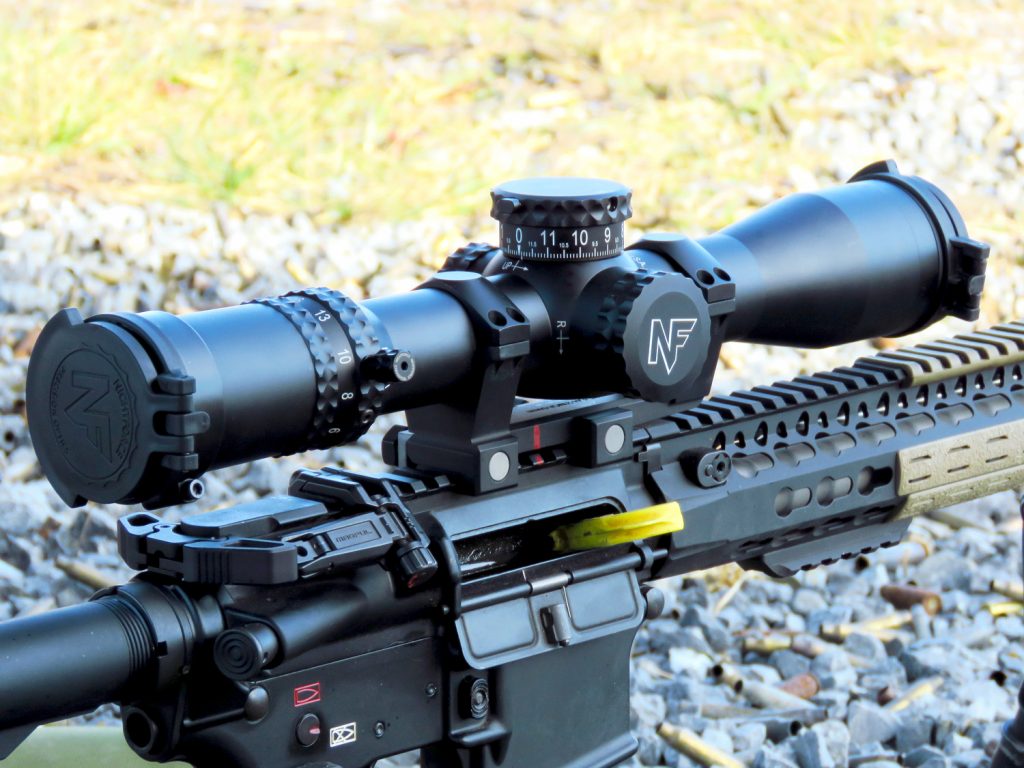
The Nightforce ATACR 4-16X42 F1 is 12.6 inches long without the front and rear flip caps, weighs 30 oz, and sports a 34mm main tube.
I’m sure most of you know that old saying about opinions and how everyone has one. Well, one opinion that seems to go round and round is that a scope with more than 10X magnification is too much for an AR-15. I can almost guarantee you that most of the people that think that will also at some point reference the 2.5-8X and 10X optics the military has used on some of their semi-auto precision rifles as justification. That’s all well and good but even the military is starting to shift their stance in this arena realizing what many of us already knew, 10X is fine but more is better.
I will capitulate that whenever I have the opportunity I am a frequent user of Nightforce optics. I’ve been using them for a number of years on various rifles but a few years ago when Nightforce released the 4-16X42 ATACR F1 I was left pining for one big time. I thought it was the perfect scope for the rifle I was using for DMR competitions at the time and now that I have my hands on one I can say that the wait was well worth it. Since receiving it and putting in some time behind it I’m also of the opinion that this could be the best, most versatile optic I’ve ever had my hands on. Granted that’s just my opinion but it is coming from 15 years of shooting precision rifles using scopes from Bushnell, Burris, Leupold, Premier Reticles, Schmidt & Bender, US Optics, etc… Stating that something is “the best ever” can be a slippery slope but I don’t feel it’s too far of a stretch for this optic when looking at the total package.
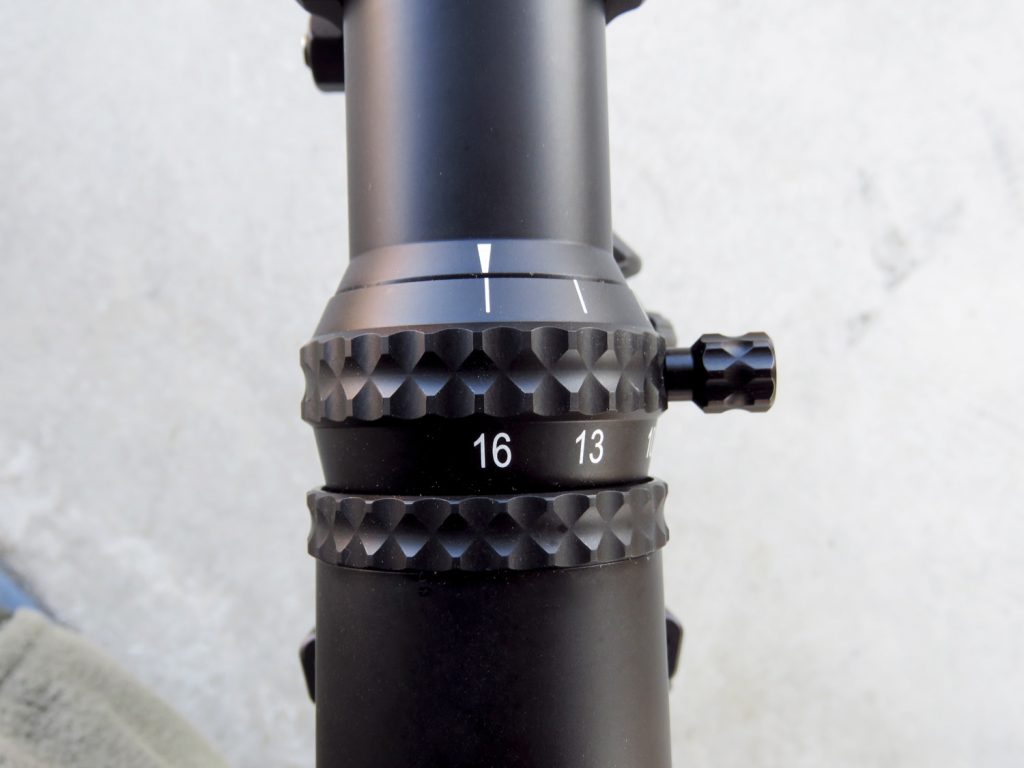
The Power Throw Lever is an optional accessory included with the scope that aids with making rapid magnification changes.
Magnification Range
As mentioned before this optic was always destined for the rifle that I use for DMR and PRS Gas Gun Series matches, a .223 AR-15 that you may have seen in some of my other articles and videos. At only 12.6″ long and weighing 30 oz sporting a 34mm main tube, I feel the ATACR F1 4-16 fits comfortably in between the specs of the 2.5-10X24 and 3.5-15X50 Nightforce scopes that it is replacing. It’s the same weight as the 3.5-15 but with some added features and an additional 1X of magnification. The 16X top end is plenty to be able to shoot long range targets while reducing the effects of mirage that can plague optics with a higher magnification. The first focal plane configuration also means the magnification can be scaled to the needs of the shooter and the reticle will always be accurate for holds or ranging. I can run the scope up to 16X to zero or to spot impacts if need be but then run it at 10-12X for most other purposes without giving it a second thought. To me, the 4-16X range puts it in a sort of “Goldie Locks” zone of useable magnification that allows you to do anything with the optic on just about any rifle.
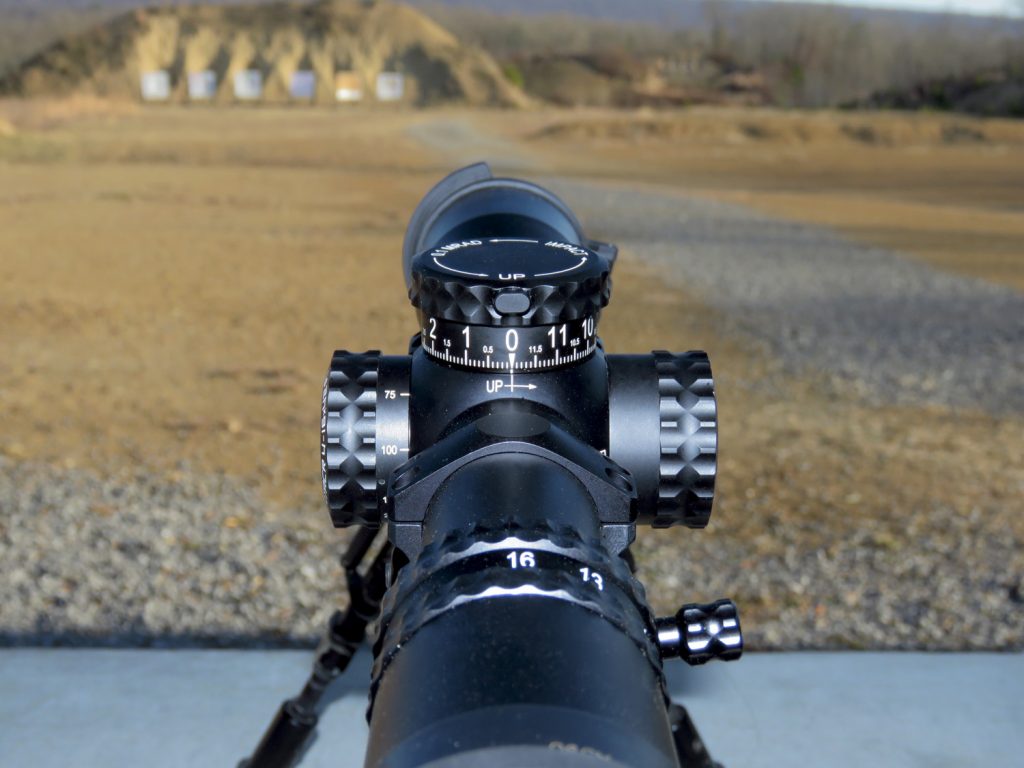
The large font size used on the elevation knob and magnification ring makes it easier to see them in low light or under stressful situations.
Features
One of the unique features of the 4-16X42 ATACR F1 that makes it so versatile is the elevation turret that is specific to this model. The turret itself is short and wide so it’s easy to get your hand on, even if your fingers are freezing. My eyes were immediately drawn to the large font on the knob. The large font size is found on both the elevation knob and magnification ring so that it draws your eyes in and makes it a little easier to read under stress or in low light. Putting 12 mils of travel on an elevation knob, even one as big as the 4-16’s is cramming it on there but the combination of the large font with audible and tactile clicks makes it easy to dial in accurate adjustments.
The little button extending out just above “0” is part of the ZeroHold system, also unique to the 4-16X42, that will lock the elevation turret in at zero. To make an elevation correction from there you have to press the button and turn at the same time. When setting up per the instructions the elevation knob will also allow for 2 mils, or 5 MOA, of downward travel before you hit a final hard stop. Conceivably, this feature will provide more flexibility by not having to reset a zero stop when using different types or lots of ammunition or if I’m using the optic on a different rifle. The ZeroHold feature, when combined with the covered windage turret, means that accidentally turning the turrets and making an unwanted correction is next to impossible.
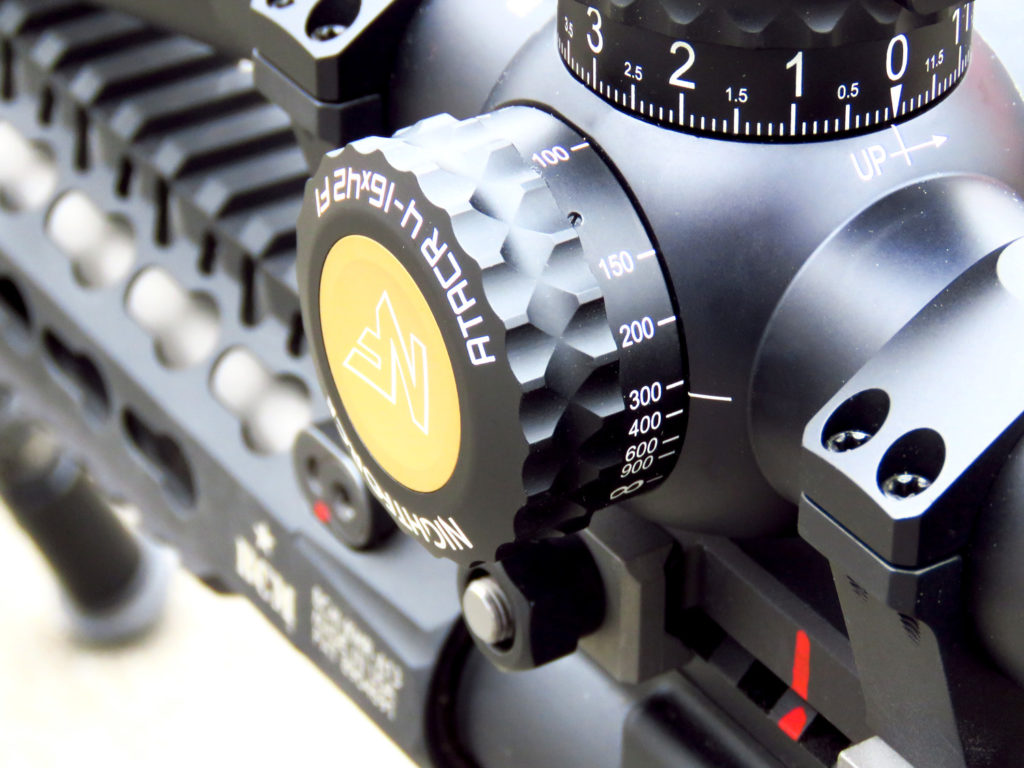
The 4-16X42 has a side focus parallax knob that is adjustable from 45 meters to infinity. The tan center portion is the Digilum illumination button.
The left side of the scope features the side focus parallax knob and integrated Digillum button to control the scope’s illuminated reticle settings.
Just like its predecessors in the NXS line when adjusting the magnification the entire magnification ring and ocular bell will rotate in unison. Ultimately, this is done for durability’s sake but it has generated some angst among users because it will also cause normal scope caps to rotate and possibly get in the way. The workaround to this problem is solved by providing Tenebraex flip covers both front and rear that can rotate 360 degrees and snap back almost flat against the scope. These caps are much stronger than the typical aftermarket cap from Butler Creek and less prone to breaking off at the hinge so it is a definite upgrade. The caps do add to the overall length though, with the caps installed on my scope the overall length goes from 12.6″ to 14″. To help make the magnification changes a little easier Nightforce supplies an optional Power Throw Lever (PTL) that easily installs into the magnification ring. If you don’t want to use it and prefer to grab the whole ocular with your hand there is also a plug that fills in the threaded hole and protects the threads.
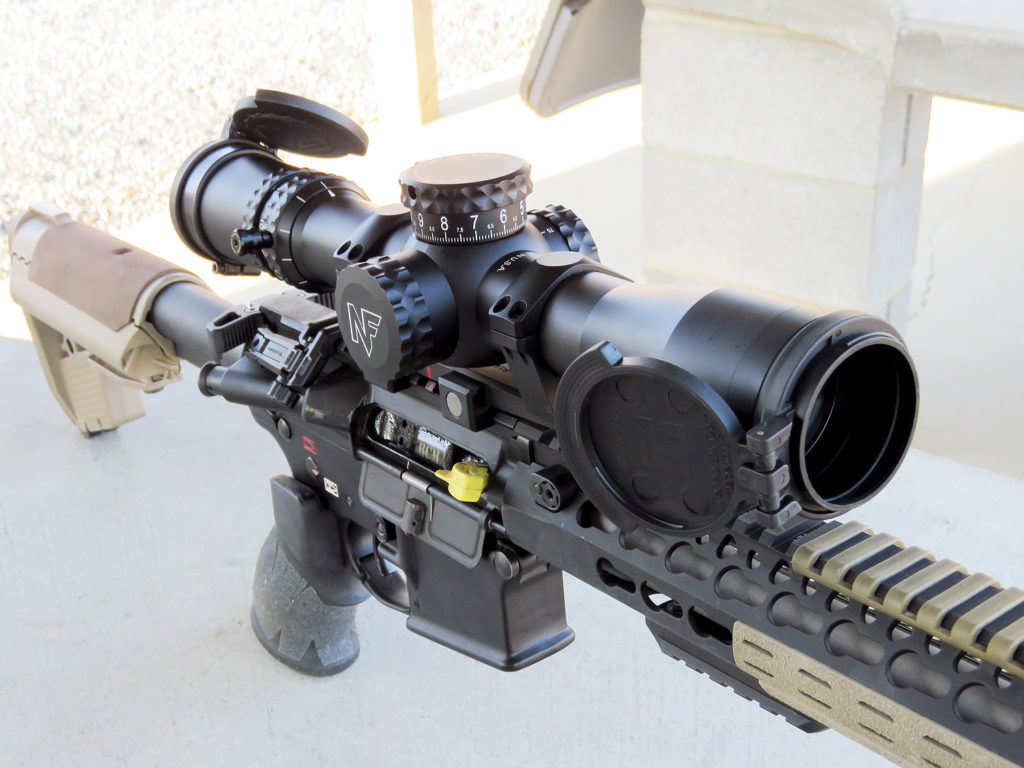
The supplied Tenebraex lens covers can rotate 360 degrees around the ocular and objective as well as fold almost flat against the scope.
Reticle
Currently, there are four mil-based reticles to choose from, the Mil-R, Mil-C, Horus H59, and TreMor3 with only one moa reticle, the MOAR. My scope, in particular, is the version with the Mil-R reticle, which some don’t like but I feel the Mil-R reticle is a solid general purpose reticle that is very functional for a variety of purposes. The reticle is arranged on the vertical axis with large hash marks every full mil and smaller hashes every half mil. On the horizontal axis, the hash marks aren’t as pronounced but they do follow the same pattern as on the vertical axis. I think some people can get tripped up by the gaps in the reticle but the easiest way I’ve found to deal with it is to understand that the gaps are 0.1 mils wide and from there it’s not too hard to work out the other subtensions. For example, from the crosshairs to the edge of the first gap it’s 0.5 mils, 0.6 mils to the other side of the gap, and 0.4 mils from the edge of the gap to the first large hash mark at 1.0 mils.
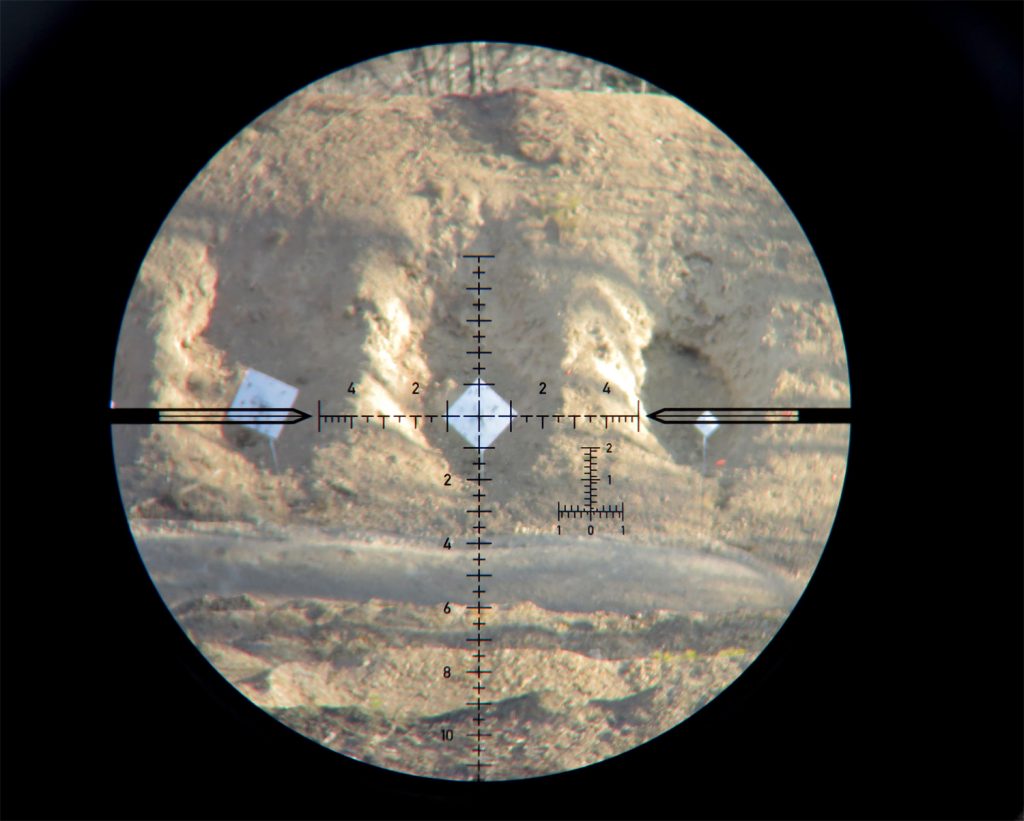
The Mil-R reticle is one of four mil-based reticle options in the 4-16X42. It_s a great general purpose reticle for long range shooting.
The thickness of the reticle was also about perfect for a general purpose scope in my opinion. On 16X I can easily quarter a 1″ paster and all the way down at 4X I can still make out the large full mil markings on the reticle so that I can use them for holdovers or leads if necessary. For ranging targets, Nightforce makes it super easy with a T-bracket in the lower right quadrant of the field of view that can allow for 0.1 mil or better breakdowns with some practice. The Digillum illumination can illuminate the reticle in two different colors, red or green, with seven intensity settings for each at the push of a button. This ability to change colors is interesting because, in the past generally, only the cheaper scopes allowed you to switch from red to green illumination. Even the most expensive scopes available only had one color to choose from and it was usually red. Using this scope in low light I’ve found that I actually prefer to use the green reticle illumination doesn’t seem to wash out as much of the target behind it.[one_half]

This shot was taken about 15 minutes after sunset with the red illumination on and the scope set to 8X.
[/one_half]
[one_half_last]

This image was taken about 15 minutes after sunset with scope set to 16X and the green illumination turned on.
[/one_half_last]
Optics
A lot of people get wrapped up in optical performance and I will say that this scope doesn’t disappoint on that front either. It’s not all that surprising considering the multicoated ED lenses used throughout the ATACR line. It’s very easy to get down behind the scope and have a nice bright image staring you back in the face. The more I’m behind this scope, sometimes just observing things near the house, I’ve been amazed at the amount of clarity and detail this scope provides. At max power I haven’t noticed any chromatic aberration, the purple fringing you can sometimes see around a light colored target, which I have noticed is present even in some more expensive scopes.
Some might think that the relatively small 42mm objective size would be a hindrance in low light but I haven’t found that to be the case at all. Thirty minutes after sunset with the scope set to 8X to open up the exit pupil, I’ve been able to easily discern vehicles as well as the lawnmower sitting in my neighbor’s field at 350 and 400 yards. The illuminated reticle would’ve made it no problem at all if I had to make a shot on a target in those conditions. I don’t know how much more time a larger objective would’ve bought me but I’m satisfied with what I’ve seen so far. Of course, the side parallax adjustment helps bring all of that in to focus and while some will hail the distance markings on the parallax knob, I for one wish they’d just put lines on it like they do on the NXS scopes. The distance markings are rarely a dead-on match on any scope, especially at the farther distances because environmental factors can affect where you actually get parallax free. That being said it works just fine, the knob turns smooth and I am able to get parallax free at 45 meters, its closest distance, and at infinity without any trouble.
Tracking/Zero
Although Nightforce scopes are well known for having accurate and precise adjustments it never hurts to test them out. Often when you see someone do a tracking test what they will run is known as a “box test.” Most times when doing a box test the person will use a normal sight in target and adjust the point of impact to the outer targets while maintaining a consistent point of aim in the center. In theory, this is fine but it isn’t a very strenuous test of the scope’s tracking abilities since the outer zeroing targets are usually only several inches out from the center. Dialing to these points equates to dialing only a few hundred yards, which even a cheap scope can accomplish. A tall tracking test is preferable since it can reveal inconsistencies in the tracking by dialing on more elevation than what you could fit on a typical sight in target. I actually ran two tracking tests with this scope, a mechanical tracking test using a Leupold bore sighter and then a live fire tracking test with the tall test target. At the range, I was limited by the size of the backboard but I was still able to use a long piece of cardboard to run a 36” plumb line up the center that would equal 10 mils at 100 yards. Going up the center I placed pasters at random intervals so that I’d have to use the reticle to measure the distance between dots and dial that in. As expected the scope tracked perfectly just as it had done on the bore sighter and it was dead on up to 10 mils while also going right back to zero. Mounted in a 20 MOA one-piece mount I have 20.5 mils of upward travel on the elevation knob, which is more than I really need for a .223 rifle shooting 77gr match bullets, but it’s good to know I have it.
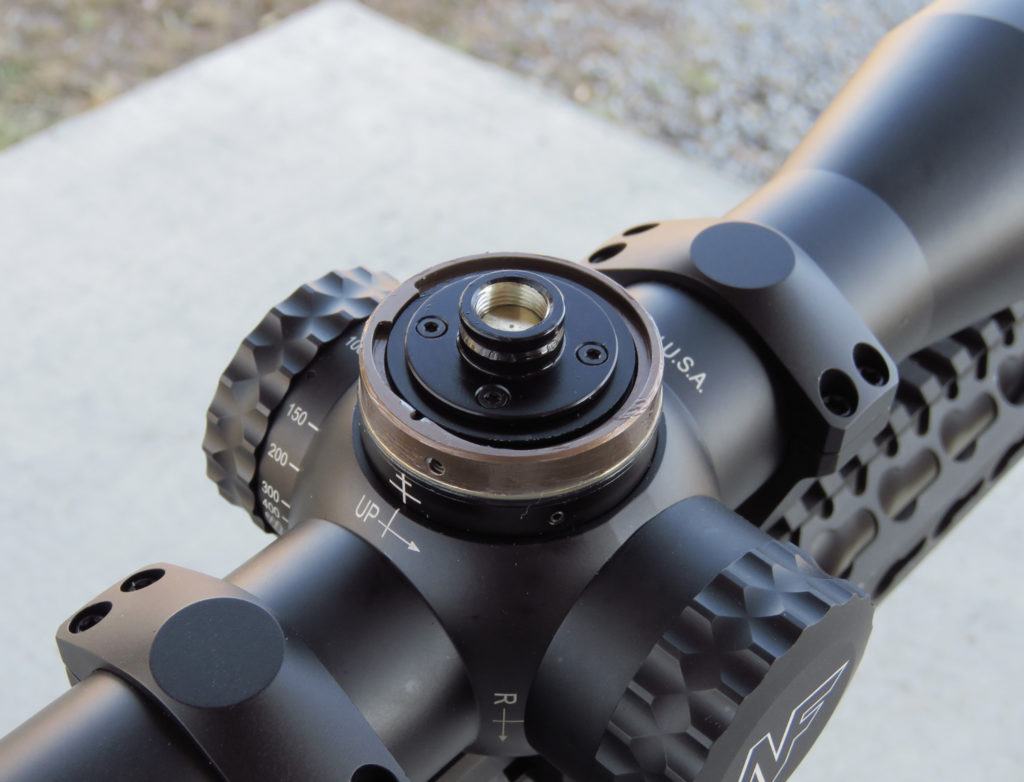
Under the elevation cap is the mechanism that drives the ZeroHold system. The notch at 6 o’clock is where it locks in at zero and the ridge at 9 o’clock is where it comes to a final hard stop.
Specs
| Focal Plane | First |
| Magnification Range | 4-16x |
| Objective lens diameter | 42mm |
| Tube diameter | 34mm/1.34in in |
| Internal adjustment range (MOA/Mil) | e: 89 MOA w: 60 MOA e: 26 Mil w: 18 Mil |
| Click value | .250 MOA .1 Mil-rad |
| Calibrated Ranging Power | N/A |
| Parallax adjustment | 45 yd–∞ |
| Exit pupil diameter | 4x:10.3mm 16x:2.7mm |
| Eye relief | 85-90mm/3.35-3.54 in |
| Field of view @100 yards/100 meters | 4x: 26.9ft 16x: 6.9ft 4x: 8.1m 16x: 2.1 m |
| Objective outer diameter | 50mm |
| Eyepiece outer diameter | 45 mm |
| Overall length (inches/mm) | 12.6in/320 mm |
| Weight (ounces/grams) | 30 oz/850g |
| Mounting length (inches/mm) | 6.3 in/160 mm |
| Front/Rear Mounting Length | 2.00 in/2.53 in |
| PTL (Power Throw Lever) | Standard |
| Reticles available | MOAR™ MIL-R™ MIL-C™ H59 TReMoR3 |
Conclusion
This scope isn’t the lightest in its class but it is lighter than some, nor is it the shortest, it misses that mark by about 3/4″, and it is costly. Its cost is actually one reason it took me the better part of two years to save the money for one. So why do I like this scope so much? Well, part of it goes back to Nightforce, because based on my experience, as a company they are consistently better than some of their contemporaries and don’t rush to get things out. They’re not perfect mind you but if something does go wrong you can rest assured that they will have your back. With this 4-16X42, Nightforce has put together a package that is very user-friendly with a combination of features and performance which make it an excellent option for a versatile, do anything kind of optic. This scope is perfectly at home on a semi-auto precision rifle, as I have done, or on bolt action rifle, even a long range hunting rifle isn’t a problem. I think if I was going to have only one scope that would have to be swapped between rifles, this would be the one. Nightforce continues to innovate and in the coming months will be offering two new first focal plane riflescopes, both 1-8X, that I’m sure will be as big a hit as this 4-16X42 F1 is.
MSRP $2425
For more information on the Nightforce 4-16X42 ATACR F1, click here.
***Check out GunsAmerica for your next Nightforce Optic***
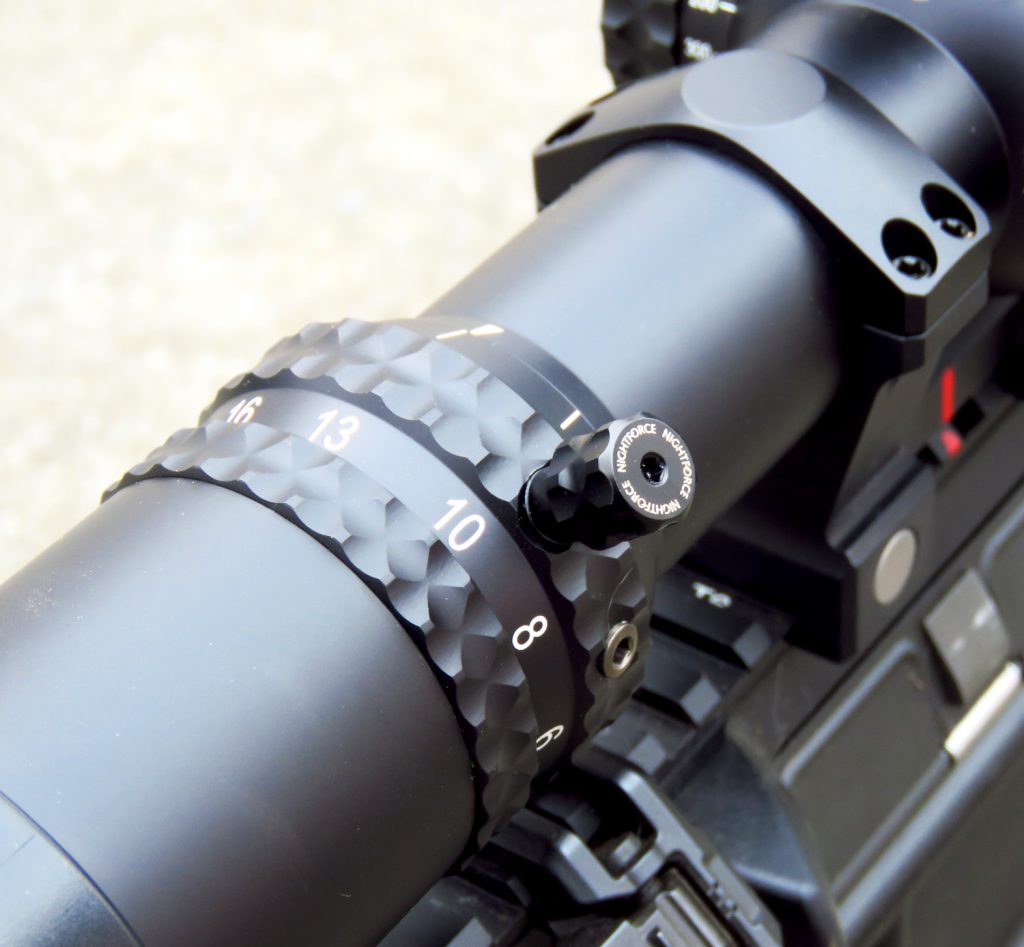
Nightforce’s attention to detail is such that even the Power Throw Level has the brand laser engraved on the end. It doesn’t have to be, chances are hardly anyone will notice, but it’s there.
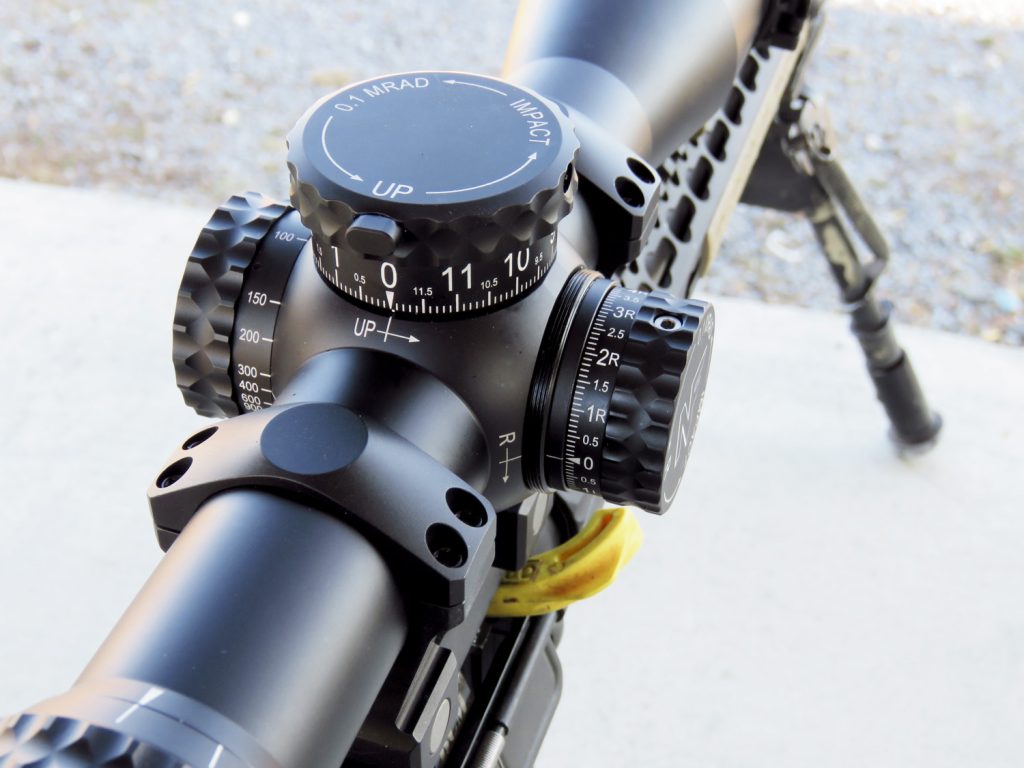
The windage cap is totally optional if the shooter wants to run it exposed. A finish ring is provided to protect the threads for the cap.
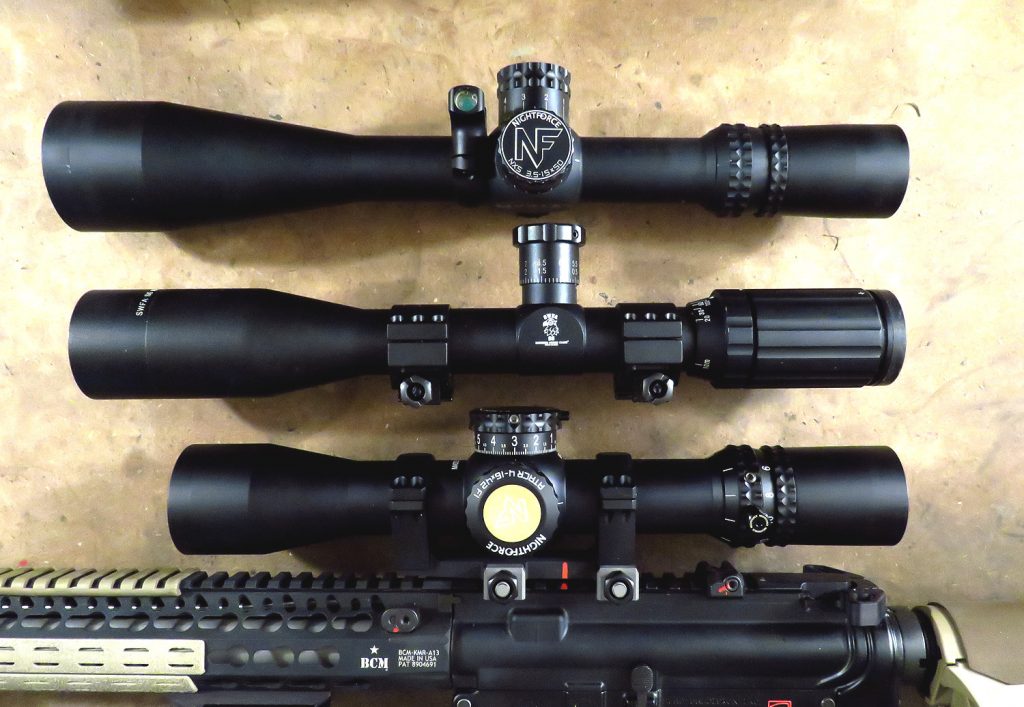
An excellent comparison of just how compact the 4-16X42 next to a SWFA 10X42 and Nightforce 3.5-15X50.
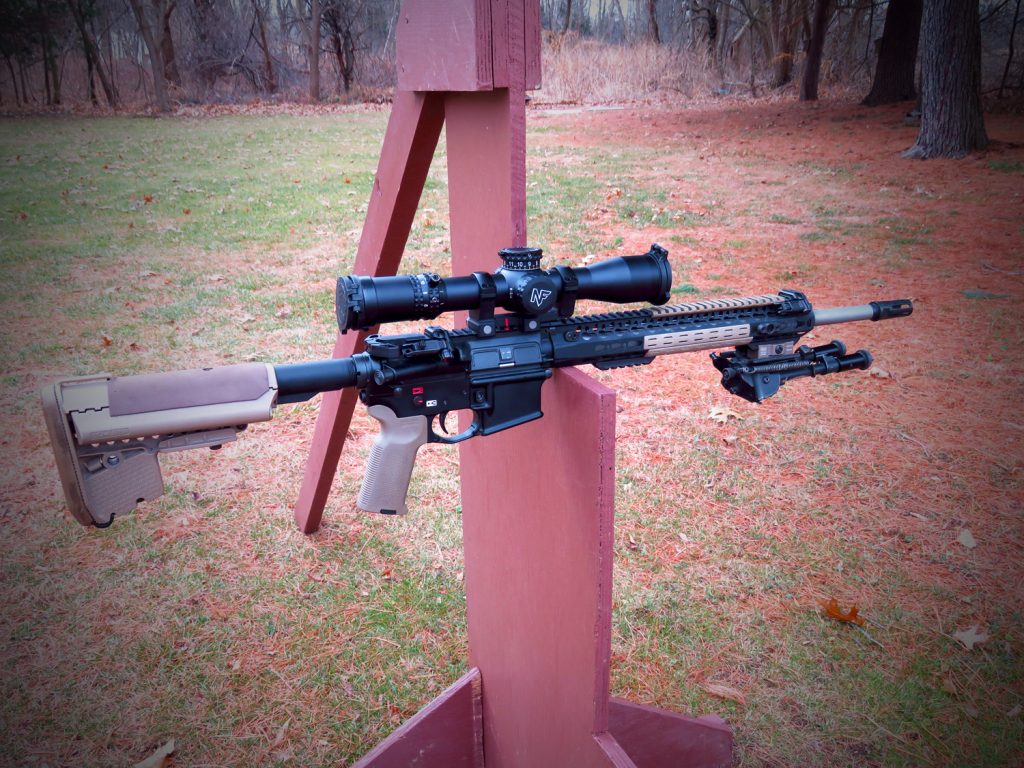
The compact size and feature set of the 4-16X42 ATACR F1 is tailor-made for a semi-auto precision rifle.
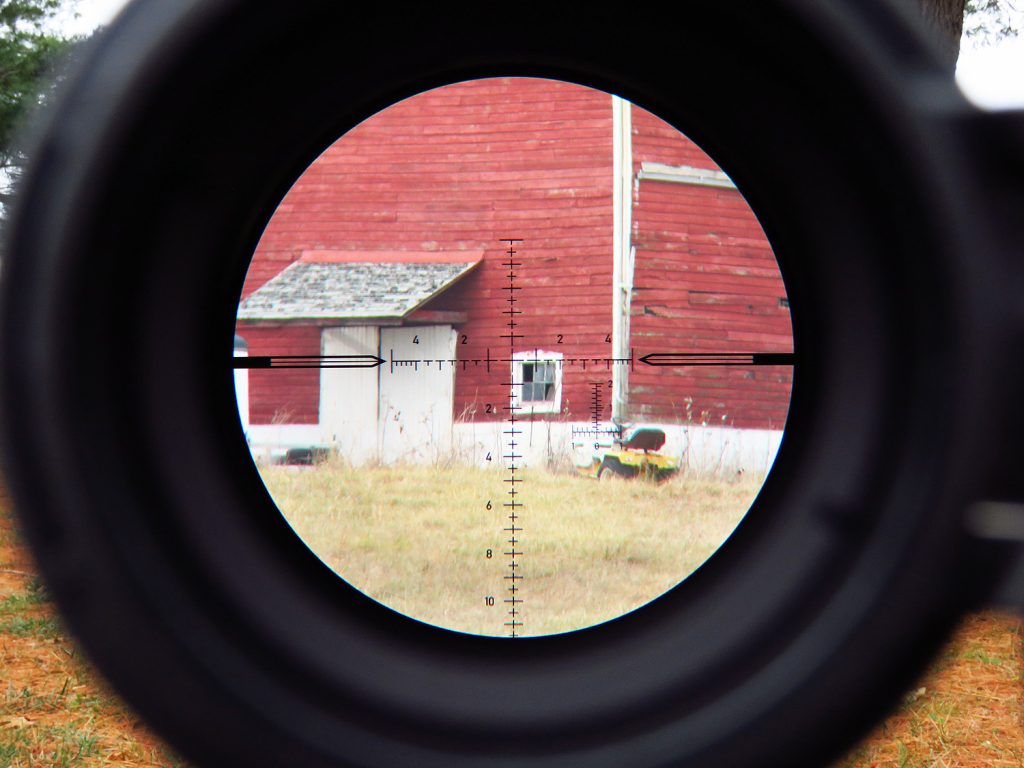
The image through the scope is crisp all the way to the edges with little to no chromatic aberration thanks to the multi-coated ED lenses.
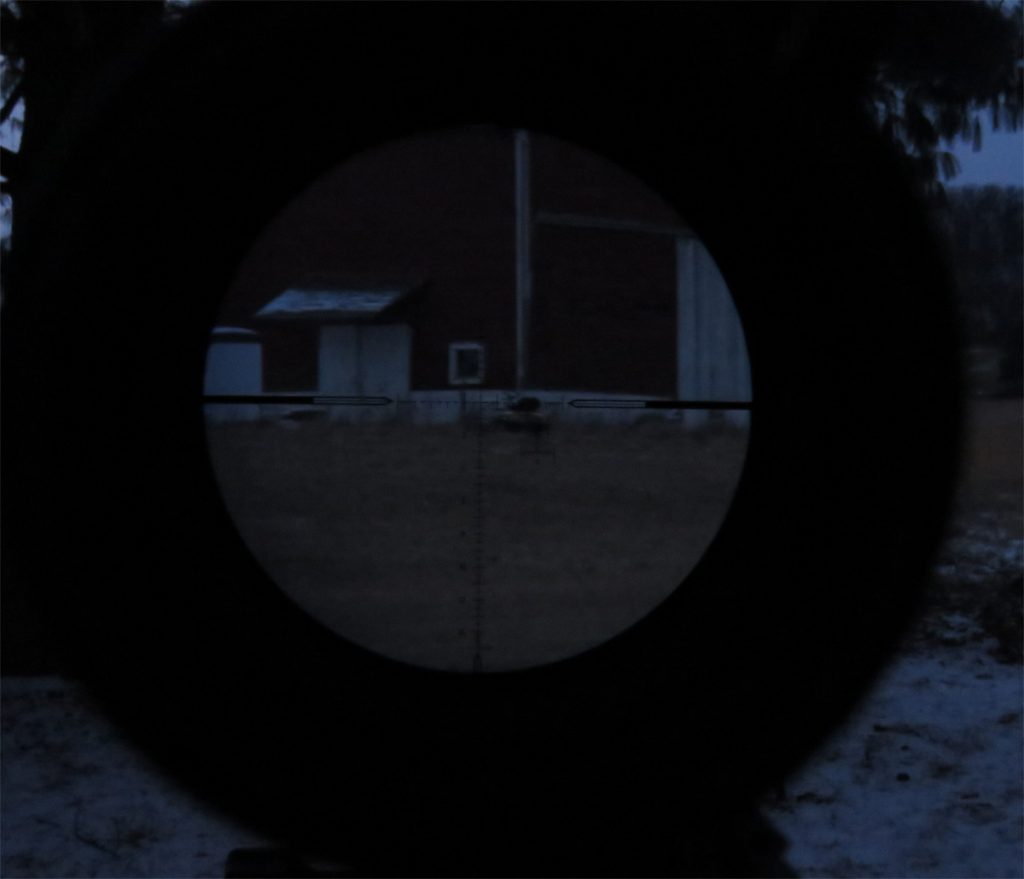
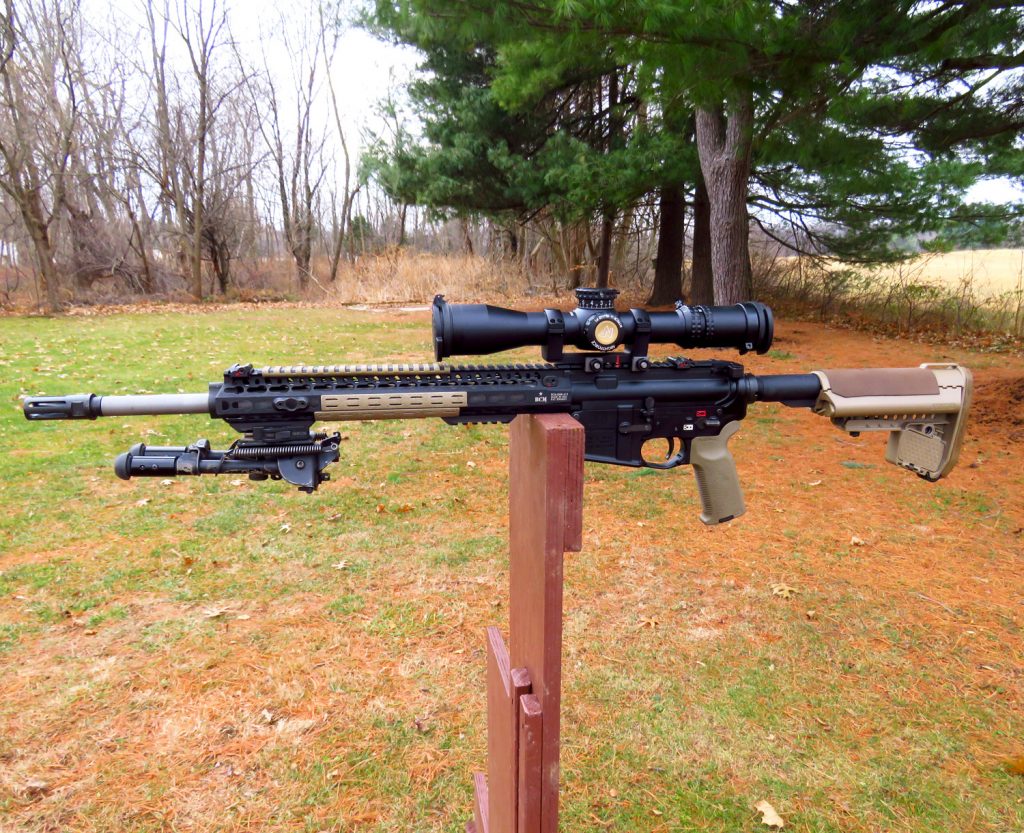
Great article!! The pictures are great and extremely helpful visual aids. The explanations and the break down of each part of the scope was so informative and precise. I really appreciate the time you took and it shows that you really like to use this scope. I agree with peter in the above article…baby boomers with disposable income are numerous. Thanks again for the article!
The ‘throw lever’ would be great if available on other scopes. I fly Leupold hi mag scopes on my AR’s. I’d like that throw lever.
Baby boomers with disposable income are numerous. We can’t take it with us so tend to enjoy it now. Our use of gloves, alone, create a need for a throw lever. Add arthritic fingers and old injuries and you have an appreciative customer. I’m pleased with Leu scopes but when less than pleased will loo for a throw lever.
(Good article, great photos)